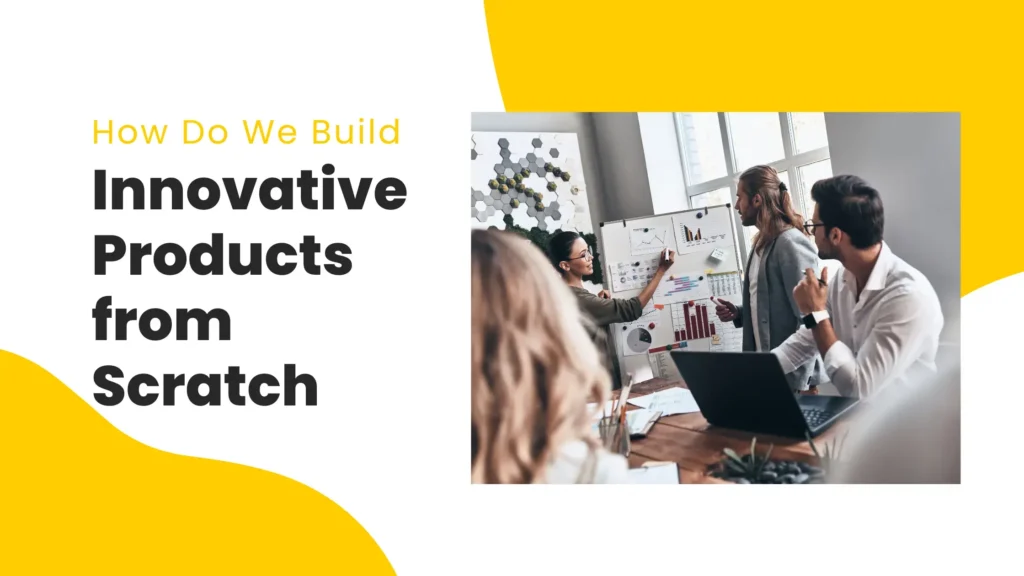Product innovation refers to creating and introducing a new or significantly improved product or service in terms of its characteristics or intended uses. This concept is pivotal in differentiating offerings in competitive markets. Innovative products stand out through unique features, superior functionality, enhanced user experience, or through the utilization of cutting-edge technology. These differential attributes not only cater to existing consumer needs in novel ways but also have the potential to tap into unarticulated or future demands. Product innovation embodies the synergy of ingenuity, technology, and market insight, propelling businesses forward and setting new benchmarks for excellence and consumer satisfaction.
Importance of Innovation in Today’s Market
In today’s dynamic market environment, Innovation is not just a strategic advantage but a necessity for survival and growth. Economic pressures, technological advancements, and evolving consumer expectations collectively drive businesses to innovate to stay competitive and relevant.
Economic Pressures:
1. Innovation is a strategic lever to combat fluctuating economic conditions and intense market competition.
2. It enables cost reduction, efficiency optimization, and the discovery of new revenue streams, aiding companies in maintaining market position and ensuring long-term profitability.
Technology Advancements:
1. The rapid pace of technological progress shortens product lifecycles and necessitates continuous Innovation to remain competitive.
2. Leveraging cutting-edge technologies (e.g., AI, IoT, blockchain) in product development can lead to market differentiation and industry leadership.
Consumer Expectations:
1. Modern consumers demand products that offer higher quality, convenience, sustainability, and personalized experiences.
2. Innovation enables companies to meet these demands, improving customer satisfaction, loyalty, and willingness to pay higher prices.
The Innovative Product Development Process
Steps in Building a New Product:
Ideation: Generating ideas through brainstorming sessions, market research, and trend analysis.
Conceptualization: Filtering and developing the most promising ideas into tangible concepts, including defining the target market, value proposition, and product requirements.
Feasibility Analysis: Evaluating technical feasibility, market viability, and financial implications to ensure the product concept is realistic and viable.
Design and Development: Crafting detailed designs and developing a functioning model or prototype of the product.
Testing and Validation: Perform various tests to assess the prototype and ensure it meets the required specifications and customer expectations.
Refinement: This involves refining the product based on feedback, technical evaluations, and test results, as well as making necessary adjustments to the design and functionality.
Best Practices in Developing Prototypes:
Iterative Design: Employing a cyclical process of prototyping, testing, analyzing, and refining the product design.
User Feedback: Actively seek and integrate feedback from potential users during prototype development to ensure the final product meets user needs and expectations.
Prototype Refinement: Continuously improving the prototype, focusing on ease of use, design, functionality, and overall user experience.
Agile Methodologies in Product Creation:
Flexibility: Agile practices prioritize flexibility, allowing for rapid response to changes in market conditions or user requirements.
Incremental Progress: Breaking the development process into manageable increments or sprints, enabling more frequent assessment and adjustment.
Cross-functional Collaboration: Encouraging close collaboration among cross-functional teams, including designers, developers, and marketers, to foster Innovation and streamline the development process.
User-focused: Agile methodologies strongly emphasize user feedback and involvement, ensuring the product remains aligned with user needs and preferences.
Speed to Market: Agile practices can significantly accelerate the development process by focusing on delivering functional increments of the product, enabling faster market entry.
Incorporating these methodologies into the product development process fuels Innovation and enhances adaptability, ensuring innovative products that are aligned with current market demands.
Strategies for Product Innovation
Diversification: Developing new products for new markets by leveraging existing strengths or exploring new areas.
Market Analysis: Understanding current market trends and predicting future demands to guide the innovation process.
Technology Adoption: Integrating the latest technologies to create products that offer new or enhanced capabilities.
Open Innovation involves collaborating with external sources, such as academia, startups, and customers, to generate fresh ideas and perspectives.
Customer Co-Creation: Engaging customers directly in Innovation to design products that closely match their needs.
Innovative Product Case Studies
Apple iPhone: Revolutionized the mobile phone industry by introducing a touch interface and a robust ecosystem of applications.
Tesla Electric Vehicles: Challenged the automotive industry by popularizing electric vehicles and integrating advanced technology like autopilot.
Amazon Echo (Alexa): Created a new market segment for smart home devices by integrating voice control and artificial intelligence.
Cross-industry Innovation Examples
Aerospace to Healthcare: The technology for monitoring astronauts’ vital signs led to telemedicine and remote health monitoring advances.
Automotive to Sportswear: Carbon fiber, known for its use in high-performance vehicles, is also used in sports equipment for its strength-to-weight ratio.
Gaming to Education: Gamification techniques employed in video games have been used to engage students in educational content, making learning more interactive.
Customer-centric Product Development
Continuous Feedback Loop: Employing surveys, beta testing, and usability studies to gather customer feedback throughout product development.
Empathy Mapping: Using empathy maps to understand customer experiences and emotions, leading to user-centered product designs.
Personalization: Offering customization options or adjustable features so customers can tailor the product to their preferences and needs.
User Experience (UX): Design Focuses on the overall user experience when interacting with the product, aiming to make it intuitive, engaging, and satisfying.
Value Proposition Design: Clearly defining how a product uniquely addresses a customer need or solves a problem, ensuring alignment with market demands.
Embracing customer-centric approaches and fostering cross-industry innovations are pivotal strategies that drive product innovation and lead to the creation of products that not only resonate with users but also have the potential to redefine
Tools and Techniques for Idea Generation
Brainstorming: Group sessions encourage the free flow of ideas without immediate criticism to foster creativity.
Mind Mapping uses visual diagrams to connect thoughts and concepts around a central idea, explore relationships, and generate new ideas.
Scamper: A checklist tool that prompts users to Substitute, Combine, Adapt, Modify, Put to other uses, Eliminate, or Reverse existing products or services.
Surveys and Questionnaires: Collecting data from potential customers or stakeholders to identify needs and opportunities.
SWOT Analysis: Assessing Strengths, Weaknesses, Opportunities, and Threats to uncover areas ripe for Innovation.
Trend Analysis: Monitoring and analyzing current trends to anticipate future product opportunities.
Design Thinking: A human-centered approach to problem-solving that encourages empathy, ideation, and prototyping.
Harnessing these tools and techniques can significantly enhance idea generation and contribute to developing innovative solutions.
Designing Your Product from Scratch
Define Your User: Identify who your product is for. Understand their needs, problems, and desires.
Market Research: Conduct thorough research to assess market demand and identify competition.
Conceptualize: Develop a clear product concept. What problem does it solve? What are its unique features?
Prototype: Create a basic model of your product. This can be as simple as sketches or as complex as a 3D print.
User Feedback: Show your prototype to potential users. Gather feedback and iterate on the design accordingly.
Technical Specifications: Outline detailed specifications, including materials, dimensions, and functionality.
Test Rigorously: Conduct extensive tests to ensure quality, safety, and reliability.
Launch Plan: Develop a marketing and launch strategy to bring your product to market.
Designing a product from scratch is an iterative process that requires a deep understanding of your target user, continuous feedback, and rigorous testing to ensure success.
From Idea to Market: Executing Your Product Vision
Bringing a product from concept to market is an extensive process that combines creativity, strategic planning, and meticulous execution. Here’s a structured approach to realizing your product vision:
1. Ideation and Conceptualization
- Identify a Problem: Start with an apparent, pressing problem your product will solve
- Generate Ideas: Utilize brainstorming, mind maps, and ideation sessions.
- Feasibility Study: Analyze the market, competition, and resources to assess the viability of your idea.
2. Design and Development
- Create a Prototype: Develop a working model of your product to visualize its functionality.
- Gather Feedback: Present your prototype to potential users and stakeholders to gather insights.
- Iterate: Refine your design based on feedback, improving functionality, usability, and appeal.
3. Market Research and Strategy
- Define Your Audience: Understand who your product is for and tailor your approach to their needs and preferences.
- Competitive Analysis: Examine your competitors to identify gaps in the market you can exploit.
- Marketing Strategy: Develop a comprehensive strategy that covers pricing, promotion, distribution, and sales.
4. Product Development
- Finalize Design: Based on the prototype testing and feedback, finalize your product design.
- Manufacturing: Source materials and decide on a production method—DIY, outsourcing, etc.
- Quality Assurance: Implement rigorous testing phases to ensure your product meets standards and regulations.
5. Launch Preparation
- Branding: Create a compelling brand identity, including a name, logo, and packaging that resonates with your audience.
- Marketing Materials: Develop materials like websites, brochures, and social media content.
- Launch Strategy: Decide a launch date and plan events, promotions, and initial distribution channels.
6. Go-to-Market
- Launch: Implement your launch plan, monitor its execution carefully, and be prepared to tackle any unforeseen challenges.
- Sales Channels: Establish your sales channels—online, retail, direct-to-consumer, etc.
- Customer Support: Set up a customer service framework to effectively handle queries, feedback, and returns.
7. Post-Launch
- Gather Data: Monitor sales data, customer feedback, and product performance.
- Iterate: Use the insights gathered to refine your product, marketing, and sales strategies.
- Scale: Explore opportunities for growth, expansion into new markets, or diversification of your product line.
Executing your product vision from idea to market is a cyclical, iterative process that doesn’t continue beyond launch. Continuous improvement and adaptation to market feedback and changing trends are crucial for long-term success.
Validating and Protecting Your Product Idea
- Conduct Market Research: Understand demand and identify your target audience.
- Feedback and Testing: Use prototypes or surveys to gather user feedback.
- Analyze Competitors: Identify what similar products exist and their market performance.
- File for Patents: Protect your invention from being copied by competitors.
- Register Trademarks: Safeguard brand elements like name and logo.
- Maintain Confidentiality: Use NDAs when discussing your idea with potential partners or investors.
Looking Forward: Future Trends in Product Innovation
- Sustainability: Eco-friendly materials and green manufacturing practices will dominate product innovation.
- Customization: Products will offer greater personalization through technologies such as 3D printing.
- Technology Integration: AI and IoT will bring intelligent, interconnected products for enhanced user experiences.
- Data Utilization: Big data analytics will drive product development, tailoring solutions to consumer behavior.
- Health and Wellness: Products focusing on health, wellness, and well-being will grow significantly.
- Virtual and Augmented Reality: VR and AR will revolutionize product demonstrations, training, and usage.
- Biodegradable Materials: Compostable materials will become more prevalent, reducing waste.
- Collaborative Consumption: A rise in products designed for sharing economies and collaborative use.
- Robotics and Automation: Advancements will lead to more automated and efficient production processes.
- Ethical and Transparent Supply Chains: Consumers will demand greater transparency, leading to ethically sourced and produced products.
conclusion
In sum, the future of product innovation emphasizes sustainability, personalization, and advanced technology usage, from eco-friendly designs to intelligent, connected devices. This era offers unprecedented opportunities for budding innovators to make impactful, meaningful contributions. Embrace these trends and stay adaptable, and your creative endeavors could shape the future, leading to remarkable innovations that address real-world problems and improve lives.
Visit our website, www.everitesolutions.com, to learn more about Build Innovative Products from Scratch. Contact us at info@everitesolutions.com or our mobile number, +1 404-835-1605, to schedule a consultation and discover how Everite can help shape your business’s future.







